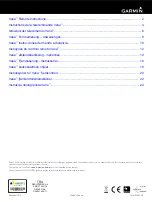
O P E R AT I N G I N S T R U C T I O N S |
Bulkscan LMS511
8014829/ZNC5/2017-06-06 |
S I C K
Subject to change without notice
2 0
CONFIGURABLE FUNCTIONS
Two strategies can be used to calculate the bulk height:
Center point:
The point on the bulk contour
which is vertical to the Bulkscan (0° angle)
is used.
Highest point:
The point on the bulk contour
with the smallest distance to the Bulkscan
is used.
h
Fig. 4: Bulk height
The bulk height is the distance between this point and the conveyor belt.
The Bulkscan can monitor the bulk height and signal a violation of the control range on
a digital output.
You can smooth the measured value with the aid of the averaging filter (see "4.11 Aver
How to configure the calculation of the bulk height:
Switch to the
Measurement
tab.
Select the required
Strategy
.
Configure the
Bulk height
avering filter, if required.
How to configure the signaling of the bulk height on a digital output:
Switch to the
Interfaces
tab.
Click on
Digital outputs
to open the
Digital outputs
tab (see "4.13 Digital outputs“
Select the assignment
Bulk height
for the required digital output.
Select the required
Logic
.
Define the
Lower limit
, the
Upper limit
, and the associated
Hysteresis
.
How to configure the signaling of the bulk height on an analog output:
Switch to the
Interfaces
tab.
Click on
BAM 100
to open the
BAM 100
tab (see "4.14 Analog module BAM100“ on
Select the assignment
Bulk density
for the required output.
Define the
4 mA point
and the
20 mA point
.
4.8
Monitoring the center of gravity
The Bulkscan determines the position of the center of gravity of the bulk from the bulk
contour. This enables tilted belts to be detected and prevents malfunctions in the case
of unsymmetrical belt filling or uneven mass distribution.
The value for the position of the center of gravity is calculated in the range from 0.0 to
1.0 within the aperture angle. The aperture angle is defined by the angles on the left
and right. A value of 0.5 corresponds to half the aperture angle (see Fig. 6). I.e., if the
h















































